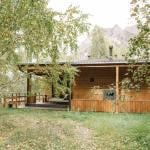How often do we hear that curious idiom – “the devil is in the details?” Of course, the intent of the phrase isn’t to focus on the “devil” at all, but rather to point to the realization that the details of any situation are the most problematic part, the part where the real, perhaps unanticipated, work lies. In the details, we find that the keys to solutions are potentially hidden and where paying attention matters. The details can be energetically charged, a place where we find that push comes to shove, where we transcend or falter. School lunches, drop-off at daycare, wet laundry three days in the dryer, illness, shareholders meeting at 10, dead battery, the news, etc., etc.! To say we live in busy times overburdened with details is a ridiculous understatement. We think, perhaps, if we can but clone ourselves, we can settle peacefully into sleep, with a fully completed “to-do” list. Yet, I have to wonder – Are we really any busier than the medieval barley farmer striving to feed his family or the 17th century enlisted soldier marching off to yet another war? Was there ever a time when humankind had a better handle on this? And, most importantly – Where is God in all this rush?
In Genesis 3:8, we find that God is fond of a walk in the Garden of Eden,
“They (Adam and Eve) heard the sound of God walking in the garden in the cool of the day.”
“In the cool of the day” is unclear, perhaps dawn, perhaps dusk, perhaps both? My father walked in our home garden at dawn and dusk, before he left in the early morning for another day of seeing patients and performing surgery, and then when he returned home in the evenings, often late. Even as a very small child, I understood that he was somehow finding peace there, strengthening for the day to come and later processing the events of that day. Perhaps, like Adam and Eve, Abraham, Noah and Enoch, my father walked with God at those times.
In the “garden” we have the opportunity to come out of our heads and to connect with our hearts to our physical and emotional reality, to Nature, to life itself and with that connection, to find the spiritual garden of the soul. In the “garden,” we find the interior temple of our soul, a place of peace, clarity, guidance, choice, and connection.
If we follow God’s example in Genesis, we walk in the garden twice daily, as the sun rises and as it sets, times of manifestation and processing, or as seen in other traditions, the sun setting and the sun rising, times of creating in the darkness and birthing in the light. These markers of manifesting and processing, creating and birthing occur in the light and in the darkness, a conversation between conscious awareness and unconscious experiences, “out there” and “in here” experiences, seeking integration.
This practice of taking time to pause at fixed times within the day to pray, to remember, reflect, and bring to full awareness the occurrences of the previous hours is an ancient practice that crosses all spiritual and cultural traditions. A few examples – We see it earliest in the Jewish practice of zmanim, and later in the Christian monastic tradition of canonical hours, in the Muslim salah (prayers), in the Balinese Hindu prayer and praise practice of offering canang sari (small hand-woven coconut leaf baskets containing fruit, flowers, rice and food ) – all traditions with one simple message –
Take time to remember – remember who you are, remember that you are both body and spirit, remember that your soul holds the wisdom to align you (body and soul) with the will of God, remember to “walk with God.”
Finding God in the details
Whether our “call to prayer” takes the form of sound in a resonant bell or voice, or a visual image of the bounty of Nature, a beloved saint or loved one, it awakens within us a realization of something greater than the reality within which we find ourselves. What does pausing and answering the “call to prayer” do to us and for us? Our days, like our lives, are matched symbolically to the movements of the Sun, the life-giver. Stopping to honor certain times brings us into the now – matching the changes in the physical day – dawn-noon-midafternoon-dusk-midnight – to the passages in our lives. One day in a life becomes the life itself. What we choose daily creates the life to come.
This “call to prayer” has the power to interrupt the “rush” of our unconscious patterns, to build awareness, to heighten consciousness. It is an opportunity to remember, re-assess and re-dedicate our lives to God. The Spiritual Exercises of St. Ignatius require a consciousness examen, an hourly/daily “checking in” on our state of consciousness, employing and focusing on the central question, “Is what I am doing/have done during this time brought me closer to God, or distanced me from God. The consciousness examen supports us in finding the space between, the opening “in time” that I like to call the SIP – the St. Ignatius Pause. I say “in time” because, despite the fact that this opening allows me “time” to relate consciously to “the details,” to what is before me, to examine all the options, points of view, and consequences, the process seems curiously to be instantaneous and to take no time at all. It pulls me out of my reactivity and helps me find God in the choice, the opening and opportunity to align my will with God’s will.
Stretching (and creating) time
“Silence is very important. The silence between the notes is as important as the notes themselves.” – Wolfgang Amadeus Mozart
But, didn’t we begin this essay with an acknowledgement of an acute shortage of time? How could one possibly introduce a practice of 2, 3, 5, or even 8 pauses in the day, into an already impossible schedule? The simple answer is that “walking with God,” being in the flow of God’s grace, is outside of physical time, which means, it takes less time, or even no time at all, depending on who’s doing all the talking, which is related to our willingness to surrender to the process.
When I was first introduced to meditation, the suggestion was to meditate 30 minutes morning and evening. I was told to not worry about the time, that “it fills itself in.” Being inexperienced, it was to me a matter of simple arithmetic, 30 minutes in the morning and 30 minutes in the evening, meant 1 less hour to attend to that “to do” list. But, I was wrong. Over time clarity and efficiency created time to spare.
Conclusion
Is there a predictive correlation between what we spend our time doing and how we do it? When we shift our awareness, we do things differently, proactively, which requires much less energy from us than adherence to reactive, unexamined actions, because we are aligned with our higher purpose, and in the flow of the creative universe. We are bringing into our lives the sacred and its unlimited power and energy.
So, what will my “call to prayer” look like in my overly busy day? If I can set my cell phone to remind me to get up from my desk and stretch in order to protect and relax my physical body, I can also set it to remind me to pause periodically in my day. All I need is a word, a tone, an image. Over time, I will desire and thirst for that space so much that I will slip into it effortlessly and immediately. For the soul it is a welcome place of rest and peace, a place of forgiveness and new starts.













